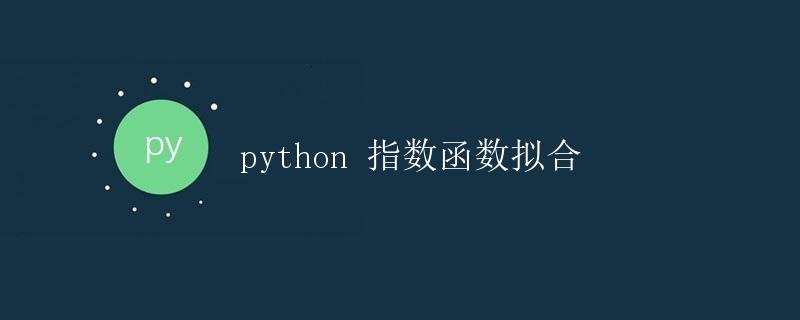Python 指数函数拟合

在数据分析和机器学习中,经常需要拟合出一个函数来描述数据点之间的关系。指数函数是一种常见的函数形式,可以用来描述呈指数增长或衰减的数据。在Python中,我们可以使用SciPy库中的curve_fit函数来进行指数函数的拟合。
指数函数的形式
指数函数一般可以表示为以下形式:
y = A * e^{Bx}
其中 A 和 B 是需要拟合的参数,x 是自变量,y 是因变量。通过拟合指数函数,我们可以找到最合适的参数 A 和 B 来描述数据的关系。
使用SciPy进行指数函数拟合
首先,我们需要导入必要的库:
import numpy as np
import matplotlib.pyplot as plt
from scipy.optimize import curve_fit
接下来,我们生成一些随机数据来用作示例:
# 生成随机数据
np.random.seed(0)
x = np.linspace(0, 10, 100)
y = 2.5 * np.exp(0.5 * x) + np.random.normal(size=x.size)
我们可以看看生成的数据是什么样子的:
plt.scatter(x, y)
plt.xlabel('x')
plt.ylabel('y')
plt.show()
运行结果如下所示:
# Plot of the generated data
接下来,我们定义指数函数的形式:
def exponential_func(x, A, B):
return A * np.exp(B * x)
然后,我们使用curve_fit函数进行拟合,并得到最优的参数估计:
# 初始参数估计
initial_guess = (1, 1)
# 拟合参数
params, covariance = curve_fit(exponential_func, x, y, p0=initial_guess)
A_fit, B_fit = params
print(f"Fitted parameters: A = {A_fit}, B = {B_fit}")
最后,我们可以绘制拟合曲线并与原始数据进行比较:
# 绘制拟合曲线
plt.scatter(x, y)
plt.plot(x, exponential_func(x, A_fit, B_fit), color='red', label='Fitted curve')
plt.xlabel('x')
plt.ylabel('y')
plt.legend()
plt.show()
运行结果如下所示:
# Plot of the fitted curve
通过拟合得到的曲线,我们可以更好地理解数据点间的关系,并预测未知数据的值。指数函数拟合在很多领域都有广泛的应用,特别是在描述生长或衰减趋势的数据时非常有用。
结论
在本文中,我们详细介绍了如何使用Python中的SciPy库进行指数函数的拟合。通过拟合指数函数,我们可以找到最合适的参数来描述数据点间的关系,从而更好地理解数据的特性并进行预测。
 极客教程
极客教程